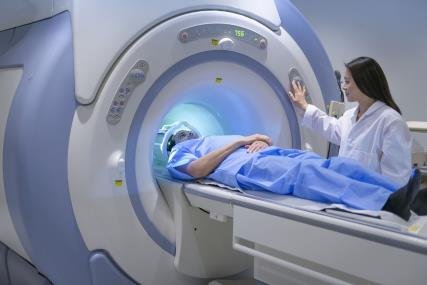How to Become a Radiology Tech: A Comprehensive Guide to Medical Imaging

Becoming a radiology technician is a rewarding career path in the healthcare industry. It offers the opportunity to work with cutting-edge technology and play a crucial role in patient care. Radiology techs operate imaging equipment to help diagnose and treat medical conditions. This blog post will guide you through the steps to becoming a radiology tech, covering education requirements, certifications, and essential skills needed to succeed.
Understanding the Role of a Radiology Technician
Radiology technicians, also known as radiologic technologists, are healthcare professionals who perform diagnostic imaging procedures, such as X-rays, CT scans, MRIs, and mammograms. Their role involves:
- Preparing patients for imaging procedures.
- Operating the equipment.
- Ensuring high-quality images.
- Collaborating with radiologists to interpret the results.
Understanding this role is the first step in determining if a career in radiology technology is right for you.
Educational Requirements for Radiology Technicians
To become a radiology technician, you must complete a formal education program in radiologic technology. Most aspiring radiology techs start with an associate degree, which typically takes two years to complete. Some may pursue a bachelor’s degree, which can provide additional opportunities for career advancement. Coursework includes anatomy, patient care, radiation physics, and imaging techniques. Choosing a program accredited by the Joint Review Committee on Education in Radiologic Technology (JRCERT) is essential.
Gaining Hands-On Experience Through Clinical Training
Clinical training is a critical component of radiology tech education. Most programs include hands-on clinical experience in a healthcare setting, where students can practice their skills under the supervision of experienced professionals. This training helps students gain confidence in performing imaging procedures, learn how to interact with patients and understand the day-to-day responsibilities of a radiology tech. Clinical training also provides valuable networking opportunities that can be beneficial when seeking employment after graduation.
Obtaining Certification and Licensure
After completing an accredited radiology tech program, the next step is to obtain certification. The American Registry of Radiologic Technologists (ARRT) is the leading certifying body for radiology techs in the United States. To become certified, you must pass the ARRT exam, which tests your knowledge and skills in radiologic technology. In addition to certification, many states require radiology techs to obtain a state license. Licensing requirements vary by state, so it’s essential to check the specific regulations in your area.
Exploring Specializations in Radiology Technology
Radiology techs have the opportunity to specialize in different areas of medical imaging. Some common specializations include mammography, computed tomography (CT), magnetic resonance imaging (MRI), and interventional radiology. Specializing can open up more job opportunities and increase your earning potential. You may need to complete additional training and pass a certification exam in your chosen area of expertise to specialize.
Essential Skills and Qualities for Success
Specific skills and qualities are essential to succeed as a radiology technician. Attention to detail is crucial, as accurate imaging is vital for proper diagnosis and treatment. Strong communication skills are also necessary, as radiology techs must explain procedures to patients, answer their questions, and work closely with other healthcare professionals. Additionally, physical stamina is needed, as the job often requires standing for long periods and assisting patients with limited mobility.
Continuing Education and Professional Development
The field of radiologic technology is constantly evolving, with new advancements in imaging technology and techniques. Continuing education is essential to stay current in your field and maintain your certification. The ARRT requires radiology techs to complete continuing education credits to renew their certification every two years. Many employers also offer opportunities for professional development, such as attending conferences, workshops, or specialized training programs.
Job Outlook and Salary Expectations
The demand for radiology technicians is expected to grow in the coming years, driven by an aging population and the increasing use of medical imaging in healthcare. According to the U.S. Bureau of Labor Statistics, employment of radiologic technologists is projected to grow 7% from 2019 to 2029, faster than the average for all occupations. The median annual wage for radiology techs was $63,710 as of May 2020, with the potential for higher earnings based on experience, location, and specialization.
Tips for a Successful Job Search
Finding your first job as a radiology technician can be challenging, but there are strategies you can use to increase your chances of success. Start by networking during your clinical training, as many students secure job offers from the facilities where they trained. Tailor your resume and cover letter to highlight your education, certification, and relevant experience. Additionally, consider joining professional organizations, such as the American Society of Radiologic Technologists (ASRT), which can provide job search resources and networking opportunities.
Advancing Your Career in Radiologic Technology
Once you’ve gained experience as a radiology tech, there are several paths you can take to advance your career. Whether you choose to specialize in a specific imaging modality, pursue a leadership role, or become an educator in radiologic technology, one thing is certain-continuous learning is key. Some radiology techs also go on to become radiologist assistants, a role that requires additional education and certification but offers more responsibility and higher pay. By investing in your professional development and continuously developing your skills and knowledge, you’ll be able to open up more opportunities for career growth in this dynamic field.
Conclusion
Becoming a radiology technician is a fulfilling career choice for those interested in healthcare and technology. By following the steps outlined in this guide—completing the necessary education, gaining hands-on experience, obtaining certification, and pursuing continuing education—you can set yourself up for success in this field. With a strong job outlook and opportunities for specialization and advancement, a career as a radiology tech offers both stability and the chance to impact patient care significantly. Start your journey today, and you’ll be well on your way to a rewarding career in medical imaging.




